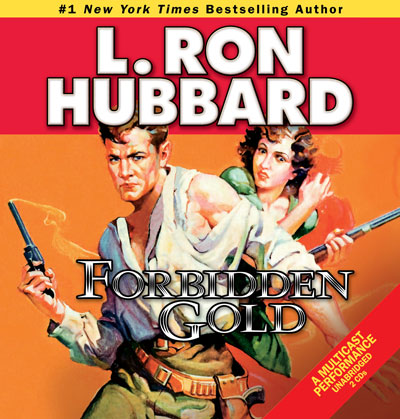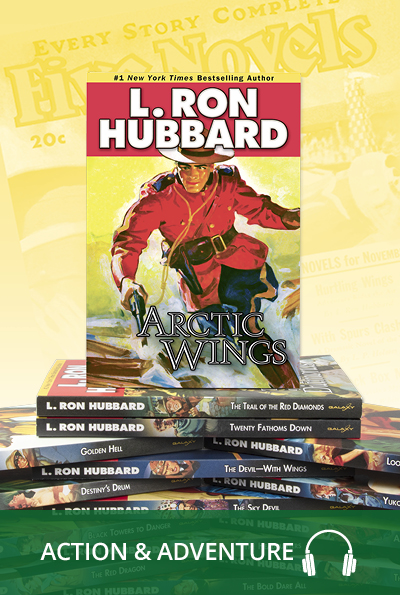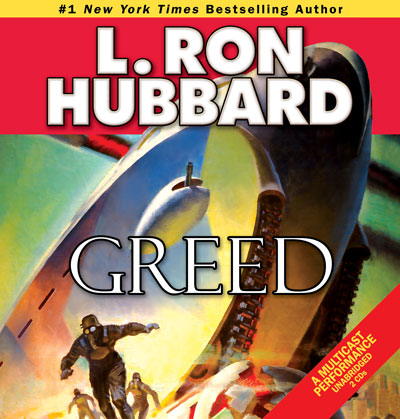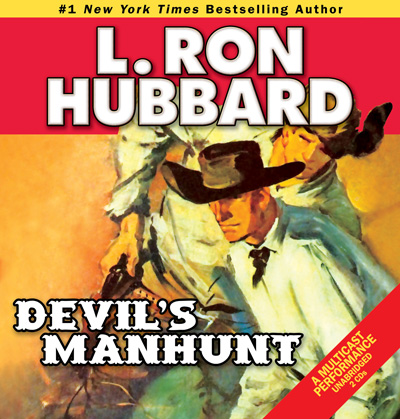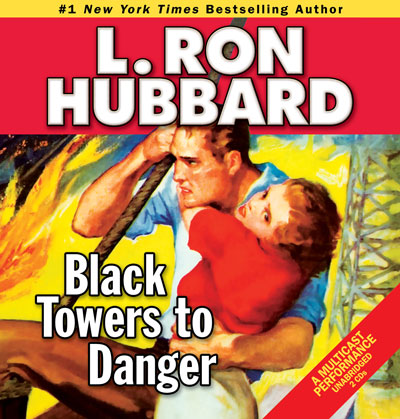The ancient jungles of the Yucatan hide a world of secrets … the secrets of wealth, love, and fate. Now daredevil pilot Kurt Reid is about to tempt fate and fly into the heart of that jungle in search of his destiny—an adventure as daring and dangerous as any undertaken by Indiana Jones.
He’s looking for gold, but not just any. He’s after one particular nugget—flying blind into a tropical haystack in search of a very valuable needle. Thanks to his grandfather’s vexing dying wish, his entire inheritance—as well as the shape of his future—hangs on the success of his journey.
As if that weren’t bad enough, Kurt soon finds that his family legacy runs deep and dark in the Yucatan. The Mayans mistake Kurt for his grandfather, and they’ve got fifty-years worth of revenge to serve up. Whether he lands on the sacrificial altar or in the arms of his sexy co-pilot Joy, things are bound to heat up fast in pursuit of Forbidden Gold.
Performers: R.F. Daley (narrator), Beth Leckbee, Bob Caso, Jim Meskimen, and Matt Scott.
SAMPLE
ABOUT THE AUTHOR
In 1931, as a student at George Washington University, L. Ron Hubbard founded the college Glider Club and within a few months a respected columnist said “he is recognized as one of the outstanding glider pilots in the country.” Later he wrote as the aviation correspondent for the prestigious flying magazine Sportsman Pilot. His combined writing and flying expertise comprised the perfect recipe to give stories like Forbidden Gold their authentic flavor.
Forbidden Gold Glossary
Stories from the Golden Age reflect the words and expressions used in the 1930s and 1940s, adding unique flavor and authenticity to the tales. While a character’s speech may often reflect regional origins, it also can convey attitudes common in the day. So that readers can better grasp such cultural and historical terms, uncommon words or expressions of the era, the following glossary has been provided.
altimeter: a gauge that measures altitude.
Annapolis: the capital of Maryland and the site of the US Naval Academy, founded in 1845.
beam: an early form of radio navigation using beacons to define navigational airways. A pilot flew for 100 miles guided by the beacon behind him and then tuned in the beacon ahead for the next 100 miles. The beacons transmitted two Morse code signals, the letter “A” and the letter “N.” When the aircraft was centered on the airway, these two signals merged into a steady, monotonous tone. If the aircraft drifted off course to one side, the Morse code for the letter “A” could be faintly heard. Straying to the opposite side produced the “N” Morse code signal.
cabin job: an airplane that has an enclosed section where passengers can sit or cargo is stored.
Colt .45: a .45-caliber automatic pistol manufactured by the Colt Firearms Company of Hartford, Connecticut. Colt was founded in 1847 by Samuel Colt (1814–1862), who revolutionized the firearms industry.
conquistador: a Spanish conqueror or adventurer.
cowl: a removable metal covering for an engine, especially an aircraft engine.
crate: an airplane.
El: elevated railway.
filibustero: (Spanish) filibuster; this term derived from the Spanish filibustero for “pirate,” “buccaneer” or “freebooter,” individuals who attack foreign lands or interests for financial gain without authority from their own government. It applied to Anglo-American adventurers in the mid-nineteenth century who tried to take control of various Caribbean, Mexican and Central American territories by force of arms.
fire, Gridley: refers to Charles Vernon Gridley (1844–1898); US naval officer who started the Battle of Manila Bay in the Spanish-American War with the order from his commanding officer, “You may fire when you are ready, Gridley.” The Spanish fleet was annihilated without the loss of a single American life. This dramatic victory eventually led to the US annexation of the Philippines.
G-men: government men; agents of the Federal Bureau of Investigation.
great seal: the principal seal of a government or state, with which official documents are stamped.
heliograph: a device for signaling by means of a movable mirror that reflects beams of light, especially sunlight, to a distance.
henequen: a plant that has large thick fibrous leaves shaped like swords, the fiber from which is used in making rope and twine. Native to tropical America, chiefly the Yucatán Peninsula of Mexico.
hoodoo: one that brings bad luck.
huckster: a street peddler.
jewelry rock: gold-bearing vein quartz.
Jonah: somebody who brings bad luck.
key: a hand-operated device used to transmit Morse code messages.
kiting: flying.
knickerbockered: clothed in loose-fitting pants gathered at the knee or calf.
Lake Pontchartrain: a lake in southeastern Louisiana north of New Orleans.
Leavenworth: Fort Leavenworth; the site of a federal penitentiary in Kansas.
legman: a reporter who gathers information by visiting news sources, or by being present at news events.
Malacca: the stem of a species of palm, brown in color and often mottled, used for making canes and umbrella handles; named after a town in western Malaysia.
monoplane: an airplane with one sustaining surface or one set of wings.
mouthpiece: a lawyer, especially a criminal lawyer.
mufti: civilian clothes; ordinary clothes worn by somebody who usually wears a uniform.
mummery: a pretentious or hypocritical show or ceremony.
newshawk: a newspaper reporter, especially one who is energetic and aggressive.
patois: a regional form of a language, especially of French, differing from the standard, literary form of the language.
peg-topped: describing pants that are full and gathered at the hips and narrow at the ankles.
puede ser: (Spanish) could be.
QST: radio signal meaning “general call to all stations.” The Q code is a standardized collection of three-letter message encodings, all starting with the letter “Q”; initially developed for commercial radiotelegraph communication and later adopted by other radio services.
rudders: devices used to steer aircraft. A rudder is a flat plane or sheet of material attached with hinges to the craft’s stern or tail. In typical aircraft, pedals operate rudders via mechanical linkages.
sap: blackjack; a short, leather-covered club, consisting of a heavy head on a flexible handle, used as a weapon.
Scheherazade: the female narrator of The Arabian Nights, who during one thousand and one adventurous nights saved her life by entertaining her husband, the king, with stories.
sideslip: (of an aircraft when excessively banked) to slide sideways, toward the center of the curve described in turning.
sisal: a strong fiber obtained from the leaves of a plant native to southern Mexico and now cultivated throughout the tropics, used for making rope, sacking, insulation, etc.
spatted wheels: a structure around the top of the wheels of a fixed airplane landing gear.
sub-Thompson: a type of machine gun that fires short pistol rounds, named after its creator, John Taliaferro Thompson, who produced the first model in 1919.
TAT: Transcontinental Air Transport, airline founded in 1928. It was one of the first to be geared to passenger service at a time when most airlines focused on air mail. In 1930, it merged with Western Air Express to form what became TWA.
three-point: three-point landing; an airplane landing in which the two main wheels and the nose wheel all touch the ground simultaneously.
Toltecs: members of an Indian people living in central Mexico before the advent of the Aztecs and traditionally credited with laying the foundation of Aztec culture.
uppers, on my: on one’s uppers; poor; in reduced circumstances. First recorded in 1886, this term alludes to having worn out the soles of one’s shoes so badly that only the top portions remain.
wig-wag: a method of using flags or pennants to send signals.
wing collar: a shirt collar, used especially in men’s formal clothing, in which the front edges are folded down in such a way as to resemble a pair of wings.
yo creo: (Spanish) I believe.
Yucatán: a peninsula mostly in southeastern Mexico between the Caribbean Sea and the Gulf of Mexico.

